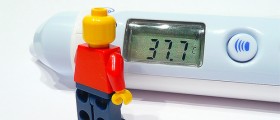
Basically, fever is a body temperature which is higher than what is considered to be optimal for humans. Usually, this phenomenon is a sign of an underlying illness. Most of us have experienced the extreme fatigue and moodiness fevers can cause due to inflammation or an infection affecting our body. Yet, other causes may be behind this condition too, like medications, cancer, exposure to heat, injuries, brain disorders or endocrine diseases.
Facts about Fever
Fever never comes on its own. Rather, it always goes hand-in-hand with some other symptoms, signifying the type of underlying disease causing it. Even though the optimal body temperature may vary with the environmental factors, time of the day, and every individual per se, 98.6 F or 37 C is considered optimal body temperature.
Our body temperature is controlled and regulated by a part of the brain called the hypothalamus. This brain part acts like a thermal detector and manager, maintaining optimal levels of body temperature through shivering, sweating and opening blood vessels closer to the skin.
However, when our body gets exposed to pyrogens, substances responsible for fever, these tell the brain to increase the temperature of the body. Then, the body starts shivering, the blood vessels constrict and we often cover ourselves with warm blankets in order to increase our body temperature even further.
Types of Pyrogens and Facts about Thermometers
Various pathogens are actually pyrogens as well. Therefore, these substances can be of viral, bacterial or fungal origin. Nevertheless, there are some other pyrogens including certain toxins and drugs.
In order to establish the exact level of body temperature, a thermometer needs to be inserted either into the rectum or in the mouth, under the armpit, on the skin or in the ear. Nowadays, we have devices which can record one's body temperature constantly.
Initially, mercury inside a glass container was used for measuring body temperature. However, due to its fragile casing and toxic nature, this type of thermometer was swapped with digital ones. Also, there are thermometers which are disposable, obtainable in a strip form, being placed on the forehead. Even though adults commonly measure their body temperature through their mouth, rectal area is the most precise source for obtaining this kind of information, but you have to keep in mind that rectal temperature is a bit higher than, for example, armpit one.
Either way, everything above 38 C or 100.4 F is considered to be abnormal, with low grade fevers ranging between 100 and 101 F and high grade fevers spreading from 103 to 104 F. Fever higher than 107 F can be deadly and is considered very dangerous.

















Your thoughts on this
Loading...